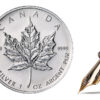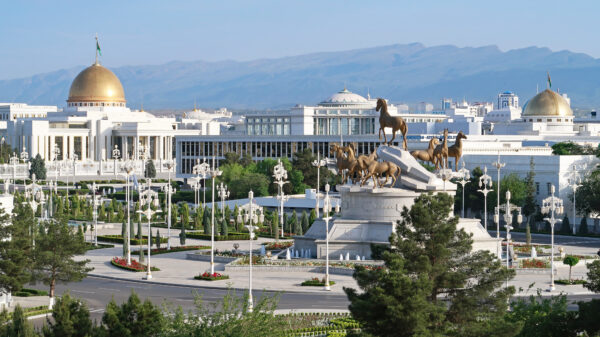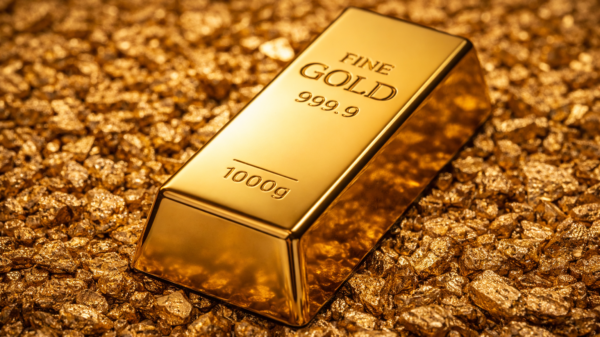The spot price of gold set a new all time high on Monday, supported primarily by a softer dollar.
Analysts from Goldman Sachs suggest that the start of another monetary easing cycle from the Federal Reserve coupled with the expectation of deeper rate cuts could theoretically underpin the non-interest bearing gold price. Further conditions include the geopolitical issues regarding the various conflicts in the Middle East, which may lead to investors turning to safe-haven assets like gold.
Gold prices edge higher for the day, maintaining a strong bullish trend on the daily chart as the price remains well-supported above the key 100-day exponential moving average (EMA). The 14-day Relative Strength Index (RSI), hovering around 70.50, signals an overbought condition, suggesting that further consolidation might occur before any near-term price rise for gold.
The metal is approaching the all-time high of USD$2,625. On the downside, the first target appears at the USD$2,600 round figure.
Meanwhile, Philadelphia Federal Reserve president Patrick Harker emphasized the US central bank’s success in navigating economic challenges over recent years. He underscored the importance of considering both “hard” and “soft” data when making decisions.
Federal reserve governor Michelle Bowman said that recalibrating the Fed funds rate was essential, though she preferred smaller initial moves due to unmet inflation targets.
Read more: Calibre Mining shows analysts the ropes at the Valentine gold project
Read more: Calibre Mining seeks new employees for the Valentine gold project
Global factors weigh in on rising gold price
There have also been some global effects on gold based on the actions of governments.
Hezbollah and Israel exchanged heavy fire on Sunday, with Hezbollah launching missiles deep into northern Israel in response to intense bombardments. This marked one of the most severe escalations in nearly a year of conflict, according to CNN. The exchange highlights the ongoing volatility in the region, with both sides engaging in retaliatory strikes.
Furthermore, central banks have significantly increased their gold purchases. China leads the charge in diversifying away from the US dollar. As of early 2024, China has been buying gold for 17 consecutive months, aiming to reduce reliance on the dollar and hedge against economic uncertainties.
This trend has been mirrored by other nations looking to shift their reserves, fuelling further demand. At the same time, momentum trading has emerged, where investors, driven by the fear of missing out on rising prices, continue to buy gold, creating a self-reinforcing cycle that drives prices even higher.
Global economic shifts, especially among BRICS nations like China, may also be influencing gold prices by increasing their reserves and exploring alternative pricing mechanisms, contributing to a more diversified financial landscape.
Meanwhile, traders are set to focus on the flash reading of the US Purchasing Managers Index (PMI) data, expected later on Monday. A stronger-than-expected result could boost the USD, potentially putting pressure on the USD-denominated gold price.
The dual demand for gold, from both industrial uses—particularly in technology—and investment, further supports a higher price floor. Additionally, as quantitative easing and fiscal policies in major economies contribute to currency debasement, gold becomes an increasingly attractive alternative.
.
Follow Joseph Morton on Twitter
joseph@mugglehead.com














